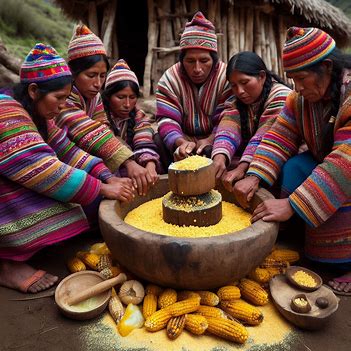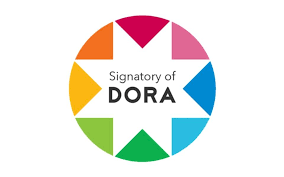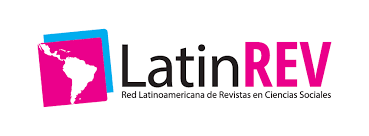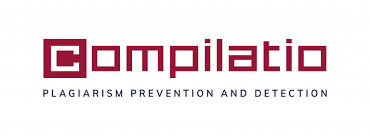The worldview around the consumption of corn Chicha in Ecuador
DOI:
https://doi.org/10.56124/sapientiae.v7i14.0008Keywords:
corn chicha, mysticism, culture, ancestral knowledge, worldview.Abstract
The cultural heritage of the manufacture and consumption of corn chicha in Ecuador is maintained thanks to the tradition and knowledge of indigenous communities who, generation after generation, bequeath ancestral knowledge to their descendants who wish to perpetrate their traditions Likewise, worldview is known as the way of seeing the world, thanks to the knowledge of the interaction and influence of the stars with the Earth and the observation of natural elements and natural phenomena. The present documentary review was developed with the aim of describing the mystical value of the consumption of corn Chicha from the time of the Inca civilization to the present day in Ecuador; for this purpose, the main assessments that various authors make about the consumption of corn chicha are made known through the framework of a documentary investigation of research works, articles and other publications linked to the topic described. The most relevant information describes that in pre-Columbian times, corn was the sacred plant par excellence and expressed the agricultural wealth of Inca society. Chicha, which is a drink fermented from one or several varieties of corn, was used to foster relations of exchange and reciprocity with different regional leaders of the empire and to this day it is consumed in Andean regions throughout South America as a nutritional source with a strong social and religious connotation.
Downloads
References
Caicedo, M. P., & Merchán, A. A. (2017, abril). Valor cultural del maíz y tecnologías ancestrales en la Parroquia Cayambe de Ecuador. Revista Chakiñan de Ciencias Sociales y Humanidades (2), 47-60. Retrieved 10 12, 2022 from https://www.redalyc.org/journal/5717/571763481006/html/
Castilla, F. B. (2019). La Chicha, Producto Gastronómico y Ritual: caso Chorro de Quevedo (Colombia) y Otavalo (Ecuador. Turismo y sociedad. doi:10.18601/01207555.N26.09 https://revistas.uexternado.edu.co/index.php/tursoc/article/view/6272/8197
Cerón, C. M. (2022). Aportes a la Etnobotánica ecuatoriana a través del Herbario QAP. Revista Homo Educator (digital) Vol. 1 (1) enero-junio, 2022. https://revistasdivulgacion.uce.edu.ec/index.php/HOMOEDUCATOR/article/view/347/336
Chan Chan, M., Moguel Ordoñez, Y., Gallegos Tintoré, S., Chel Guerrero, L., & Betancur Ancona, D. (2021). Caracterización química y nutrimental de variedades de maíz (Zea mays L.) de alta calidad de proteína desarrolladas en Yucatán, México. Biotecnia, 23(2). https://doi.org/10.18633/biotecnia.v23i2.1334
Ecuador Gastronomía (2017). Maíz en la gastronomía ecuatoriana desde tiempos precolombinos. Retrieved 12 10, 2022 from https://ecuador.gastronomia.com/noticia/7863/maiz-en-la-gastronomia-ecuatoriana-desde-tiempos-precolombinos
Flores Jiménez, W. (2018): “Sobre la Historia de las Chicherías Cuzqueñas” https://enfoquescusco.wordpress.com/2018/12/11/invernaderos-de-cultura-apuntes-sobre-la-historia-de-las-chicherias-cusquenas/
Frau-Ardon, M. (2020). De lo sagrado a lo profano: la chicha de jora. T&f. Dialnet, huM-363: Teoría de la literatura y sus aplicaciones. pp. 51-61 https://dialnet.unirioja.es/descarga/articulo/8125337.pdf
Gayral, M., Gaillard, C., Bakan, B., Dalgalarrondo, M., Elmorjani, K., Delluc, C., Brunet, S., Linossier, L., Morel, M.H. y Marion, D. 2016. Transition from vitreous to floury endosperm in maize (Zea mays L.) kernels is related to protein and starch gradients. Journal of Cereal Science, 68:148-154.
Jácome Villacrés, L., Macías Barberán, J., Zambrano Cedeño, J. (2021). Análisis del Folklore Montubio, Referente a las Bebidas Artesanales de Manabí. DOI: http://dx.doi.org/10.23857/dc.v7i6.2334
Jamioy, J. (2017). Los Saberes Indígenas son Patrimonio de la Humanidad. Revista Nómada. https://nomadas.ucentral.edu.co/nomadas/pdf/nomadas_7/07_5J_Lossaberesindigenassonpatrimonio.pdf
Lara Daza, S., Torres Iles, G., Tixilima, G., Limaico, C., Reyes Tello, C., & Cerón Martínez, C. (2022). Etnobotánica del Arte Culinario Ancestral, San Francisco de Natabuela, Imbabura-Ecuador. Revista Homo Educator Vol. 1(2) julio-diciembre, 2022. https://revistasdivulgacion.uce.edu.ec/index.php/HOMOEDUCATOR/article/view/374/363
Linares, D. (2022). Saberes Ancestrales como Proceso Praxiológico Endocultural para el Desarrollo Agrícola y Pecuario de los Pueblos Indígenas Apureños. Revista Científica CIENCIAEDUC vol. 10, núm. 1, http://portal.amelica.org/ameli/journal/480/4803731025/4803731025.pdf
Mulky, J. (2014). Libro Fotográfico "Las Chichas y Su Simbología". Universidad Politécnica Salesiana de Quito, Quito, Ecuador. https://dspace.ups.edu.ec/bitstream/123456789/7267/6/UPS-QT06202.pdf
Quispe Lázaro, A. (2004). La Cultura Chicha en el Perú. Revista Cultura Electrónica Construyendo Nuestra Interculturalidad Año1. Vol 1: 1-7. https://www.researchgate.net/profile/Arturo-Quispe-Lazaro/publication/221940405_La_cultura_chicha_en_el_Peru/links/0922b4f7239e043232000000/La-cultura-chicha-en-el-Peru.pdf
Robayo, C., Camino, M., Moreno, T. (2020). Alimentos sagrados en la cosmovisión andina. Revista Ciencia e Interculturalidad 13, Vol. 27, No. 2, DOI: https://doi.org/10.5377/rci.v27i02.1044
Tapia, M. (2020). Alimentos, celebraciones y rituales de los pueblos indígenas del Ecuador. Universidad San Francisco de Quito, Quito, Ecuador. https://repositorio.usfq.edu.ec/bitstream/23000/10361/1/138724.pdf
Sampieri, R. H. (2010). Metodología de la investigación. México: McGraw-Hill Interamericana Editores, S.A de C.V.

Published
How to Cite
Issue
Section
License
Copyright (c) 2024 Revista Científica Multidisciplinaria SAPIENTIAE. ISSN: 2600-6030.

This work is licensed under a Creative Commons Attribution-NonCommercial-ShareAlike 4.0 International License.

2.jpg)


















